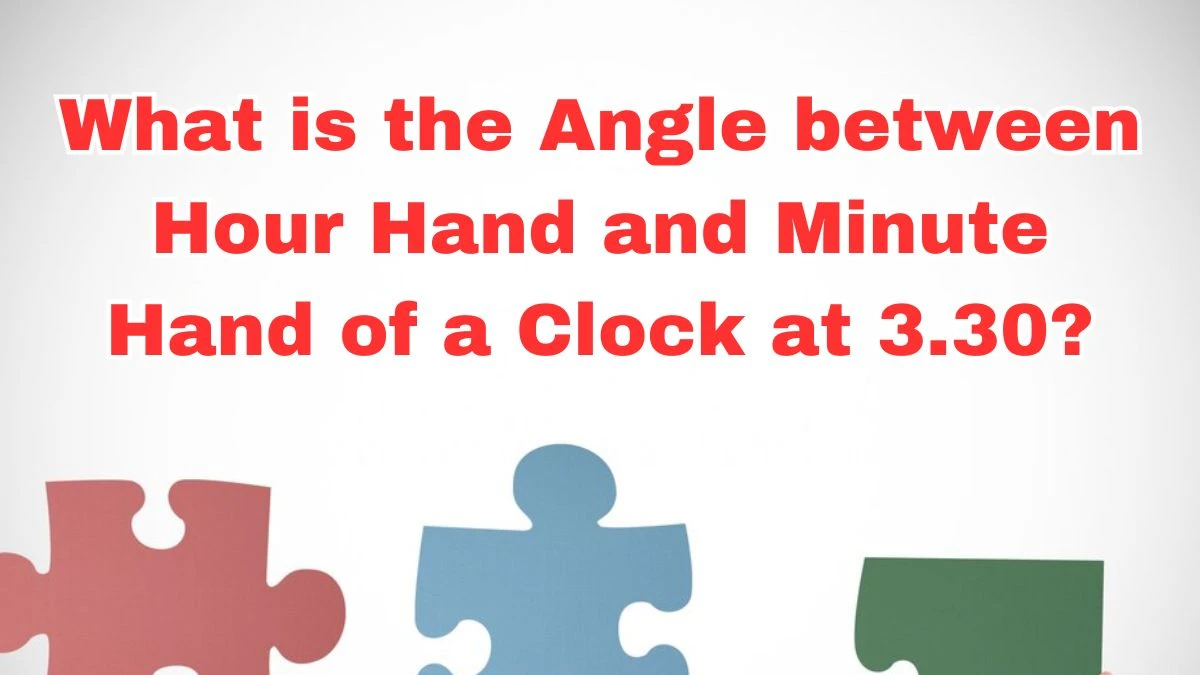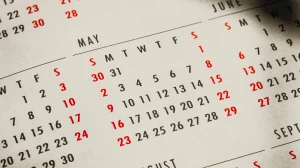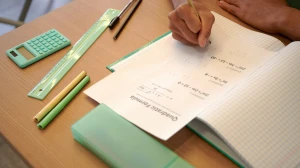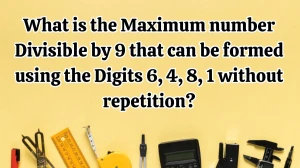What is the Angle between Hour Hand and Minute Hand of a Clock at 3.30?
by
Updated Jul 24, 2024

What is the Angle between Hour Hand and Minute Hand of a Clock at 3.30?
A clock is divided into 12 hours, with each hour representing a 30-degree segment (360 degrees / 12 hours = 30 degrees per hour).
Each minute represents a 6-degree movement of the minute hand (360 degrees / 60 minutes = 6 degrees per minute).
At any given time, the position of the hour and minute hands can be determined based on the number of hours and minutes passed.
At 3:30, the minute hand is at the 6 o'clock position.
This is equivalent to 180 degrees from the 12 o'clock position (6 x 30 degrees)
At 3:00, the hour hand is at the 3 o'clock position, which is 90 degrees from the 12 o'clock position.
Since it's now 3:30, the hour hand has moved halfway between the 3 and 4 o'clock positions.
Each hour represents a 30-degree segment, so the hour hand moves 0.5 degrees per minute (30 degrees per hour / 60 minutes = 0.5 degrees per minute).
In 30 minutes, the hour hand moves 15 degrees (30 minutes x 0.5 degrees per minute).
At 3:30, the hour hand is at 90 degrees + 15 degrees = 105 degrees from the 12 o'clock position.
The angle between the hour and minute hands is the absolute difference between their positions
Angle = 180 degrees (minute hand) - 105 degrees (hour hand)
Angle = 75 degrees
How to Calculate Angles?
Calculating the angle between the hour and minute hands of a clock is a useful and interesting mathematical concept. It involves understanding the movement of the clock hands and how angles are formed. This topic is frequently used in math problems and has practical applications in everyday life.
Clock Divisions:
- A clock is divided into 12 hours, with each hour marking 30 degrees of the circle (since a full circle is 360 degrees).
- Each minute represents 6 degrees (since 360 degrees divided by 60 minutes equals 6 degrees per minute).
Position of the Hands:
- The minute hand moves 6 degrees per minute.
- The hour hand moves 0.5 degrees per minute (30 degrees per hour divided by 60 minutes).
Applications
- Problems involving angles between clock hands are common in geometry. They help students understand concepts of angles and their measurements.
- Questions related to clock angles are often found in competitive exams. They test a student’s ability to apply mathematical concepts to solve real-world problems.
- Knowing how to calculate the angle between clock hands can help in understanding time better and in solving problems related to time differences.
- It helps in solving a variety of problems and has practical applications in everyday situations.




